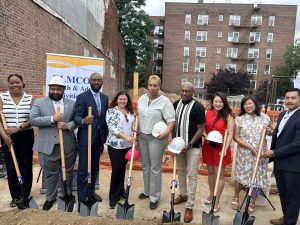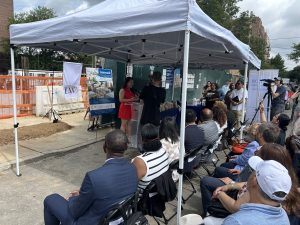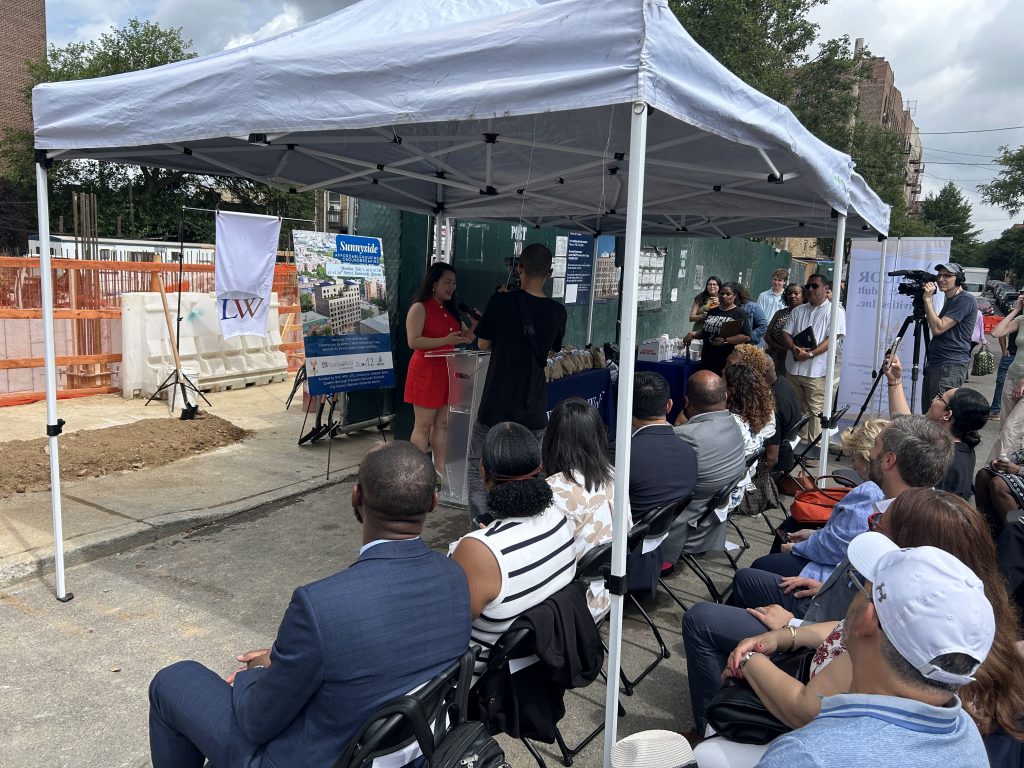
Christian Spencer
Sunnyside is in desperate need of affordable housing, according to local community members.
On Monday, July 7, one of New York City’s most established Black-led nonprofits broke ground on a new development to help meet that need.
Elmcor Youth & Adult Activities is leading the construction of a $51.5 million affordable housing project aimed at addressing displacement and structural inequality.
This latest effort reflects Elmcor’s commitment to pairing housing with dignity, particularly for Black and Brown New Yorkers disproportionately impacted by housing insecurity.
The six-story building will include 55 permanently affordable apartments—studios through three-bedrooms—and feature a community space and embedded services such as job readiness, mental health support, and youth programming.
“This is stability for 55 families that will have permanent affordable housing right here in Queens,” Queens Borough President Donovan Richards said. “We think about 55 units, but there are 55 stories behind every unit count that’s going to be built here.”
“This is a really smart way that Elmcor is building this project because it’s not just about physical infrastructure,” said U.S. Representative Grace Meng, who was present at the event. “It also comes with the backing of wraparound services for families—from youth to the seniors who are going to be living in these buildings. And it’s close to public transportation.”
The outdoor event, held at 43-12 50th Street near the 46th Street–Bliss Street station on the 7 line, brought together nonprofit leaders, elected officials, architects, and city housing officials in a show of support for Elmcor’s model of nonprofit-led development.
The project is a joint development between Elmcor, Lemle & Wolff Companies, and Sarana Development Group, with public financing from city agencies and contributions from lending partners such as Webster Bank.
Meng, who sits on the House Appropriations Committee, noted the federal role in supporting projects like this.
“Every year, we allocate funding to New York State, New York City, and we are actually trying to get more,” she said. “I have legislation that would allocate billions of dollars more to build projects like these.”
The project is about more than delivering affordable housing; it is rooted in a community-led vision that prioritizes design integrity and neighborhood identity.
Officials involved in the development, including Acting HPD Commissioner Ahmed Tigani, emphasized the importance of architectural continuity, noting that the building was deliberately designed to echo Sunnyside’s historic Art Deco housing stock from the 1920s and ’30s.
“Having affordable housing built here in Sunnyside not only aligns with the city’s promise to address this issue in every borough—it also means investing in an incredibly rich, diverse, and culturally important neighborhood,” Tigani said. “Delivering 55 units here is very important to HPD, and I’m excited to see it happen.”
Tigani also outlined the city’s financial commitment: “We contributed tens of millions of dollars to make sure we could meet the affordability requirements. That includes city capital, Council and Borough President RESO-A funds, and support from partners like Webster Bank and a Community Development Financial Institution.”
He described the agency’s rigorous vetting process for developers: “We evaluate proposals based on our term sheets, sustainability goals, broadband access, unit mix, and other requirements that address both housing and broader city policy needs.”
While subtle to outsiders, this design choice carries deep significance for longtime residents. It honors the neighborhood’s architectural legacy and ensures that affordability does not come at the expense of quality or character, reflecting the same level of care typically reserved for market-rate developments.
“Queens has one of the longest waitlists of any borough to get affordable housing,” Meng said. “And so we need more housing.”
She also connected the project to her broader legislative goals, saying, “This organization is providing a lot of wraparound services to the families who are living here, so it’ll be great.”




